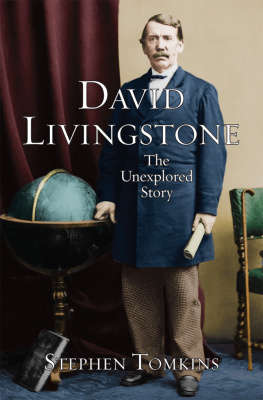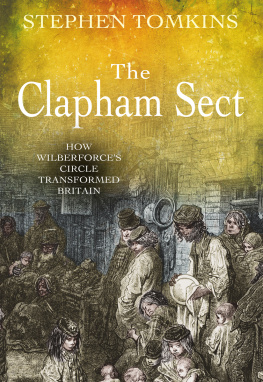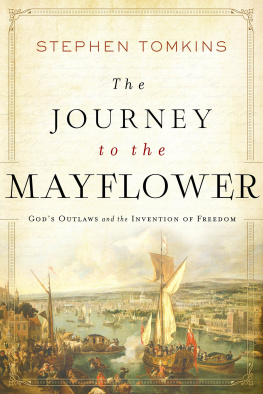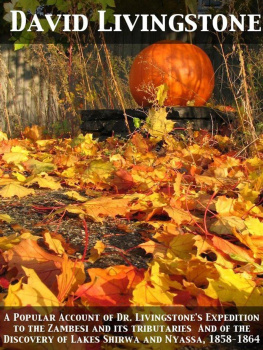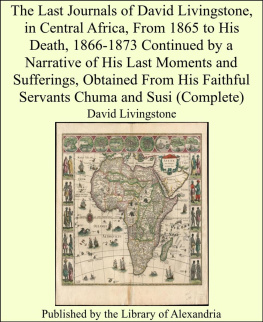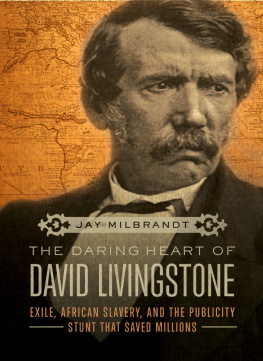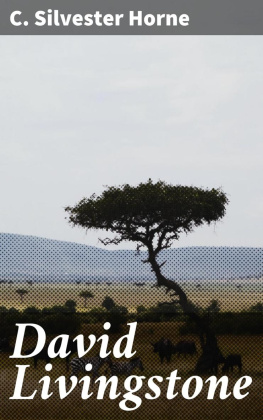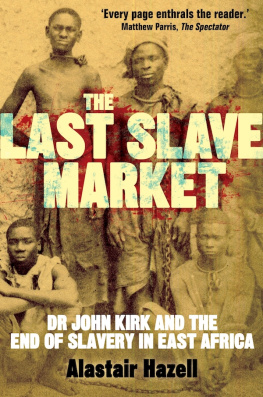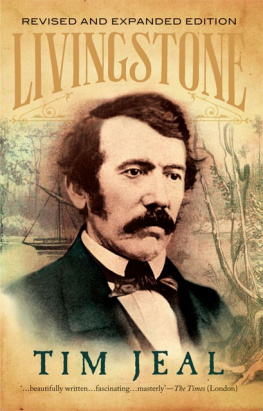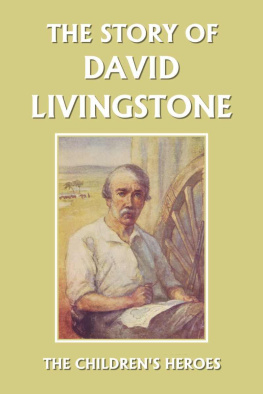

Text copyright 2013 Stephen Tomkins
This edition copyright 2013 Lion Hudson
The right of Stephen Tomkins to be identified as the author of this work has been asserted by him in accordance with the Copyright, Designs and Patents Act 1988.
All rights reserved. No part of this publication may be reproduced or transmitted in any form or by any means, electronic or mechanical, including photocopy, recording, or any information storage and retrieval system, without permission in writing from the publisher.
Published by Lion Books
an imprint of
Lion Hudson plc
Wilkinson House, Jordan Hill Road,
Oxford OX2 8DR, England
www.lionhudson.com/lion
ISBN 978 0 7459 5568 1
e-ISBN 978 0 7459 5719 7
First edition 2013
Acknowledgments
Every effort has been made to trace the original copyright holders where required. In some cases this has proved impossible. We shall be happy to correct any such omissions in future editions. pp. 17, 24, 25, 80, 91, 95, 227: Extracts from Mission and Empire by Andrew Ross copyright 2002 Andrew Ross. Reprinted by permission of Bloombury. pp. 29, 34, 60, 63, 68, 69, 70, 71, 73, 74, 93, 97, 110: Extracts from David Livingstone family letters 18411856 edited by Isaac Shapera copyright Chatto & Windus, 1959. Reprinted by permission of Random House. pp. 32, 36, 37, 4041, 44, 45, 46, 48, 49, 50, 54, 55, 56, 57, 58, 60, 61, 65, 67, 68, 72, 74, 77, 79, 81, 88, 89, 90, 94, 96, 99, 100, 102, 10910, 115, 116: Extracts from Livingstones Missionary Correspondence 18411856 edited by Isaac Shapera copyright Chatto & Windus, 1961. Reprinted by permission of Random House. pp. 34, 52, 72, 73, 81, 97, 105, 127, 177, 226, 229: Extracts from David Livingstone by Tim Jeal copyright Tim Jeal, 1973. Reprinted by permission of Aitken Alexander Associates. p. 134: Extract from Kirk on the Zambesi: A chapter of African history by Sir Reginald Coupland Sir Reginald Coupland, 1928. Reprinted by permission of Oxford University Press. pp. 28, 30, 31, 32, 33, 44, 60, 63, 71, 94, 127: Extracts from London Missionary Society Archive, Africa Odds, ?, SOAS Library & Special Collections. pp. 171, 172, 204, 208, 209, 210, 211, 212, 213, 214, 217: Extracts from Livingstones 1871 Field Diary edited by Adrian S. Wisnicki sourced from Digital Library Program, University of California, Los Angeles. pp. 34, 43, 44, 48, 54, 64, 65, 68, 69, 76, 77, 80, 81, 92, 122, 131, 135, 136, 137, 139, 142, 143, 145, 146, 155, 157, 168, 178, 179, 181, 187, 189: David Livingstone archive material from National Library of Scotland, Royal College of Physicians and Surgeons of Glasgow, Wellcome Library, Mitchell Library: James Cowie Collection, National Museum of the Royal Navy and Royal Geographical Society. Sourced from and used by permission of Livingstone Online. pp. 19, 53, 56, 60, 63, 106, 110, 112, 120, 125, 126, 127, 130, 131, 132, 133, 136, 137, 139, 141, 145, 146, 147, 148, 149, 152, 161, 166, 16768, 172, 174, 175, 178, 179, 183, 193, 203, 223, 227, 229: Sourced from David Livingstone: His life and letters by George Seaver. Published by HarperCollins, 1957. pp. 31, 59, 130, 131, 132, 133, 134, 136, 138, 13940, 141, 142, 144, 148, 152, 163, 164, 169, 170: Sourced from The Zambesi Journals and Letters of Dr John Kirk 185863 edited by Reginald Foskett. Published by Oliver & Boyd, 1965. pp. 168, 171, 179: Sourced from The Zambesi Journal of James Stewart, 18621863 edited by J. Wallis. Published by Chatto & Windus, 1952. pp. 132, 178: Sourced from Livingstone, the liberator: A study of a dynamic personality by James MacNair. Published by HarperCollins, 1968.
A catalogue record for this book is available from the British Library
Cover image: Hulton-Deutsch Collection/ Corbis
Chapter 1
THE MILL
From the old photograph, the mill in the industrial village of Blantyre, on the Clyde, eight miles south-east of Glasgow, looks like a prison. Five storeys of pale blank wall, with square towers, it dominates the village as it dominated the lives of the villagers. Before Shaftesburys Factory Act, villagers were working fourteen-hour days and six-day weeks by the age of eight, and could expect that to be the pattern of their whole lives. It took an unusual mind to see this building as the gateway to a world waiting to be explored. But the boy going about his work with Ruddimans Rudiments of the Latin Tongue balanced on the spinning jenny, ignoring both the thunderous racket of the machines and the girls throwing bobbins to try to knock his book off, must have seemed something more than the usual. If one characteristic governed David Livingstones life, it was independence, and it did so from the start.
David started work in Blantyre mill at the relatively advanced age of ten. Before then, as well as attending the village school, he had worked occasionally herding cows for a local farmer, and clearly had the same attitude to that job: the farmer later recalled, I didna think muckle o that David Livingston when he worked wi me. He was aye lyin on his belly readin a book.
In the mill, David was a piecer, which meant his job was to watch for broken threads and tie them. It required constant attention, making it remarkably indulgent if the management regularly allowed him to read at the loom. (He recalled doing so a good deal later in life.) Monteith & Co. were proud of their health and safety record: only two out of 520 workers died in the first four years the mill was open. The mill was hot, crowded and noisy, the air full of cotton dust and the stink of the toilets, which were tubs emptied once a day, but the workforce was largely free from industrial injuries and disorders.
Living in one of the fairy neuks [nooks] of creation, says an 1835 national report about the Blantyre villagers, religious and moral, well fed and clothed, and not overwrought, they seem peculiarly happy, as they ought to be. Co-authored by the manager of the mill, the assessment risks a certain degree of overstatement, but life was far better for the Livingstones than it was in most British mill towns. Far from being allowed to study Latin, it was not unusual for young children to be punched, lashed, tied up and flogged, even dropped head-first into water, for getting drowsy in a fourteen-hour night shift. Monteith & Co. were also uncommonly generous in letting the Livingstone family live in company accommodation, despite the fact that Davids father Neil did not work for them. They had a one-room apartment in the block called Shuttle Row, which still stands today, outliving the mill itself thanks to its most famous resident. The family of seven, three boys and two girls, slept, cooked and ate all meals in this room, sharing one washroom with the other twenty-three households of Shuttle Row.
The mill also offered a better life than rural Scotland, where the family had come from. Davids grandfather, also Neil Livingstone, had left the small rocky island of Ulva off the coast of Mull, where generations had eked out a living as subsistence farmers, to work in the new mill. He and thousands like him, like those in developing countries today moving from villages to sweatshops, chose the gruelling and exploitative life of waged labour over the even more gruelling existence of subsistence farming.
Davids father Neil had started out working in the mill, first as a clerk, then apprenticed to the firms tailor, David Hunter, a post that came with an education subsidised by the company. Neil married Agnes Hunter, Davids daughter, in 1810. The Hunters were from a similar background to the Livingstones, but they were Lowlanders. Keenly evangelical, Neil quit tailoring to become a travelling tea salesman, which allowed him to distribute evangelistic tracts around the region.
Next page
